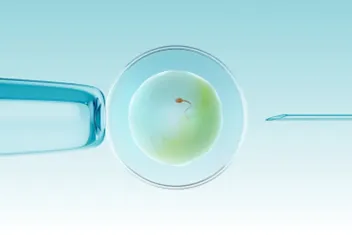In vitro Fertilization (IVF)
In vitro fertilization (IVF) is the procedure the fertilisation of eggs by sperm is outside the body in a laboratory.

The process involves
➔Ovarian stimulation
Fertility drugs are used to stimulate the ovaries to produce multiple mature eggs, this process typically lasts 8 to 14 days.
➔Egg retrieval
The Eggs are then retrieved from the ovaries using a needle guided by ultrasound.
➔Fertilization
The sperm and eggs are then combined, in a laboratory dish. Fertilization can take place through conventional insemination or by injecting a single sperm directly into an egg a procedure called Intracytoplasmic Sperm Injection.
➔Embryo transfer
After the development of embryo, one or more embryos are transferred into the woman’s uterus.
➔Pregnancy
Pregnancy occurs if an embryo successfully implants itself into the uterine lining.
➔Ovarian stimulation
Fertility drugs are used to stimulate the ovaries to produce multiple mature eggs, this process typically lasts 8 to 14 days.
➔Egg retrieval
The Eggs are then retrieved from the ovaries using a needle guided by ultrasound.
➔Fertilization
The sperm and eggs are then combined, in a laboratory dish. Fertilization can take place through conventional insemination or by injecting a single sperm directly into an egg a procedure called Intracytoplasmic Sperm Injection.
➔Embryo transfer
After the development of embryo, one or more embryos are transferred into the woman’s uterus.
➔Pregnancy
Intercourse or an IUI is then timed around the time of ovulation to increase the chances of conception.
Uses of Ivf
- Damaged or blocked fallopian tubes and the IVF procedure bypasses the fallopian tubes entirely.
- IVF can overcome fertility issues related to Endometriosis.
- This could overcome the factor of male infertility, including conditions like low sperm count or motility.
- Ovulation disorders like conditions of Polycystic Ovary Syndrome (PCOS).
- Advanced maternal age, where the age impacts the egg quantity or quality.
- Unexplained infertility, where the cause of infertility is not identifiable.
- Embryos can be screened for any genetic abnormalities before they are transferred.
Meet Our Doctor

Dr. Shivani Chandan L
Accomplished Gynaecologist and Laparoscopic Surgeon
